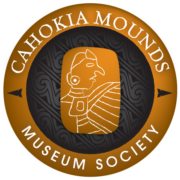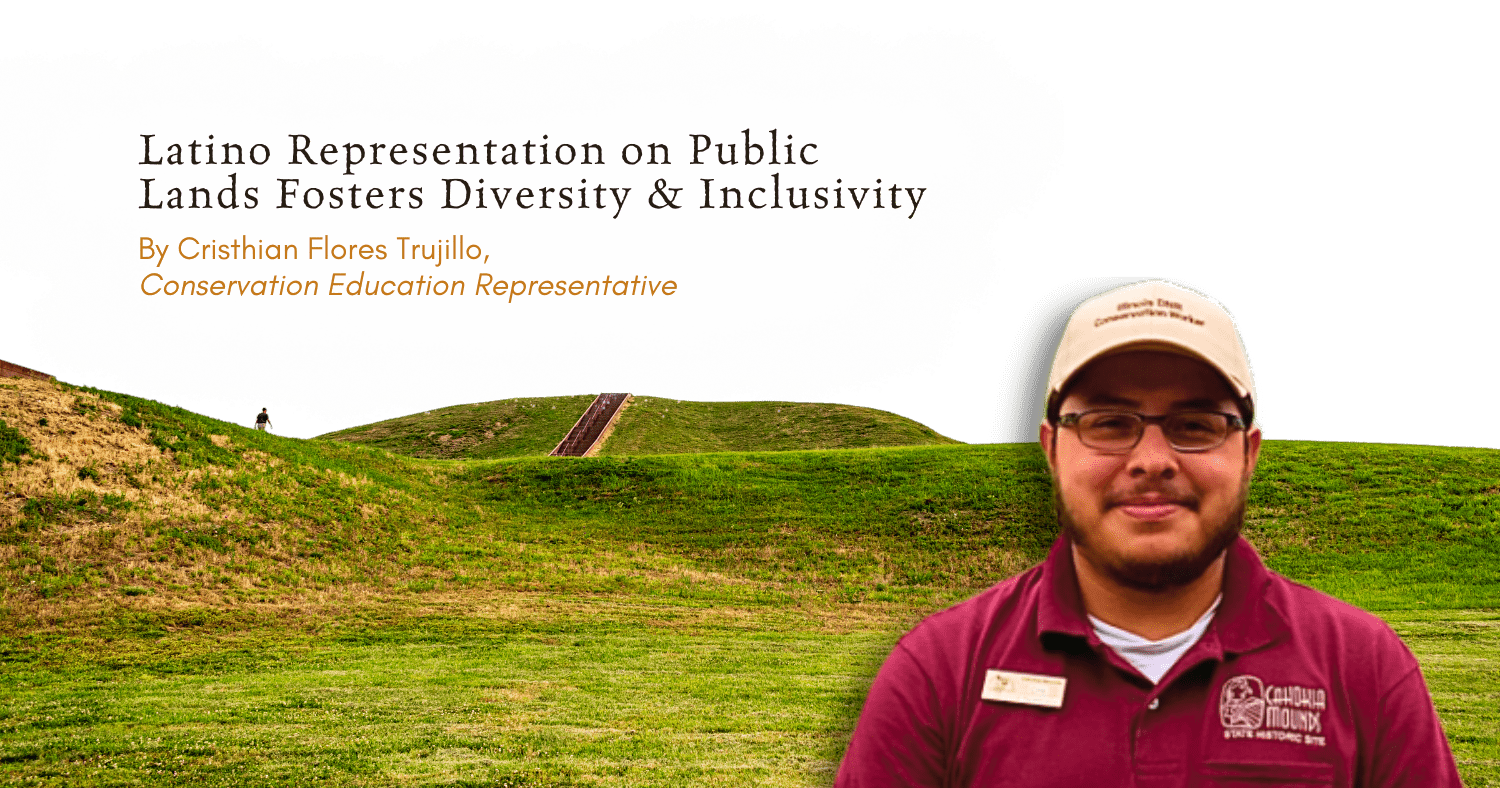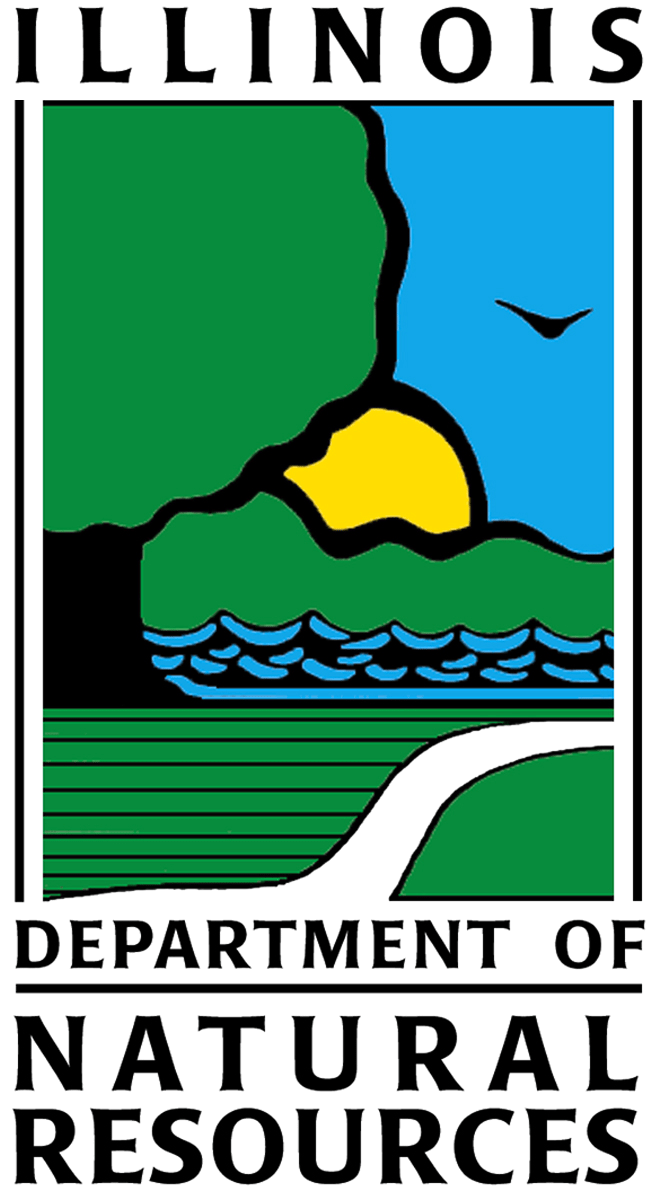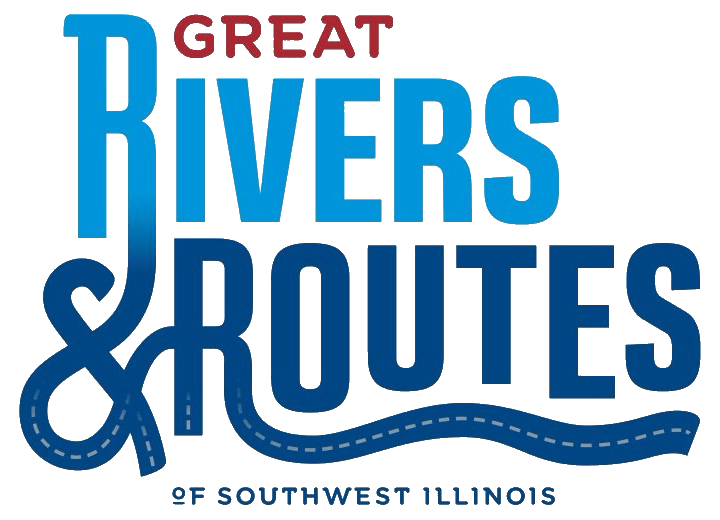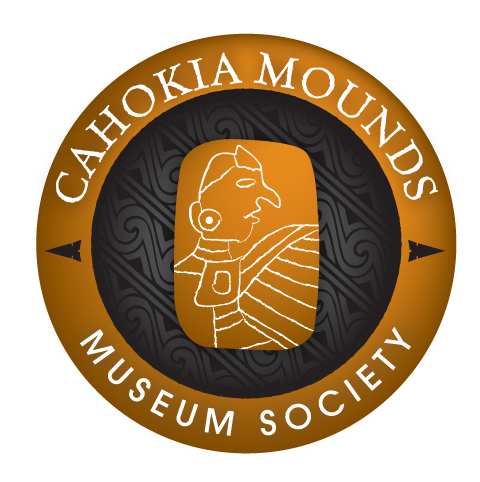Latino Representation on Public Lands Fosters Diversity and Inclusivity
By Cristhian Flores Trujillo, Conservation Education Representative
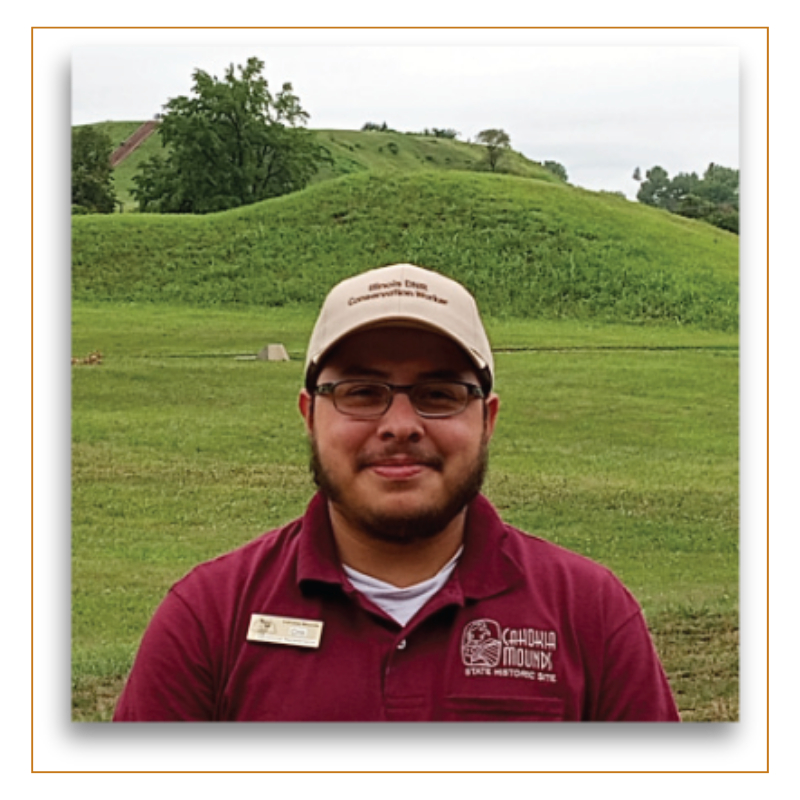
Cristhian Flores Trujillo, Conservation Education Representative (2023, 24). Photo Courtesy of Cahokia Mounds State Historic Site.
It has been a privilege working at Cahokia Mounds State Historic Site as the Conservation Education Representative. This great opportunity has allowed me to continue my career of working with public lands. My career began with a yearlong visitor services internship that I completed with The U.S. Fish and Wildlife Service, working at Desert National Wildlife Refuge in Las Vegas, Nevada. This was my first exposure to working with public lands, in this case on a federal scale. My work in that position focused on educational programing and community outreach, which has translated well into my current position here at Cahokia Mounds, where I share similar responsibilities and duties.
While working at the refuge as a Latino, I was able to host and assist with events such as Latino Conservation Week and an offering for the Day of the Dead, honoring and recognizing Latino entomologists for their contributions to conservation and preservation of monarch butterflies. These events targeted the underrepresented Latino community as they tend to be some of the least represented groups that visit public lands. My hopes have been to provide information and content in Spanish, so the large demographic of the Spanish speaking community feels like they are included and are able to partake in these natural and cultural resources.
I am pleased to continue this goal here at Cahokia Mounds, as a large portion of the State Park Place community are Latinos. I have had the opportunity to offer tours in both English and Spanish, with the hopes of targeting the immediate community as this ancestral indigenous site sits in their very own backyard. Unfortunately for the Spanish speaking residents, all the interpretive signage in the museum and on the grounds are in English, which prevents non-English-speaking Latinos from learning about this sacred cultural site. There are Spanish self-guided tour booklets available for purchase, but I believe offering free guided tours in Spanish is a more welcoming introductory approach.
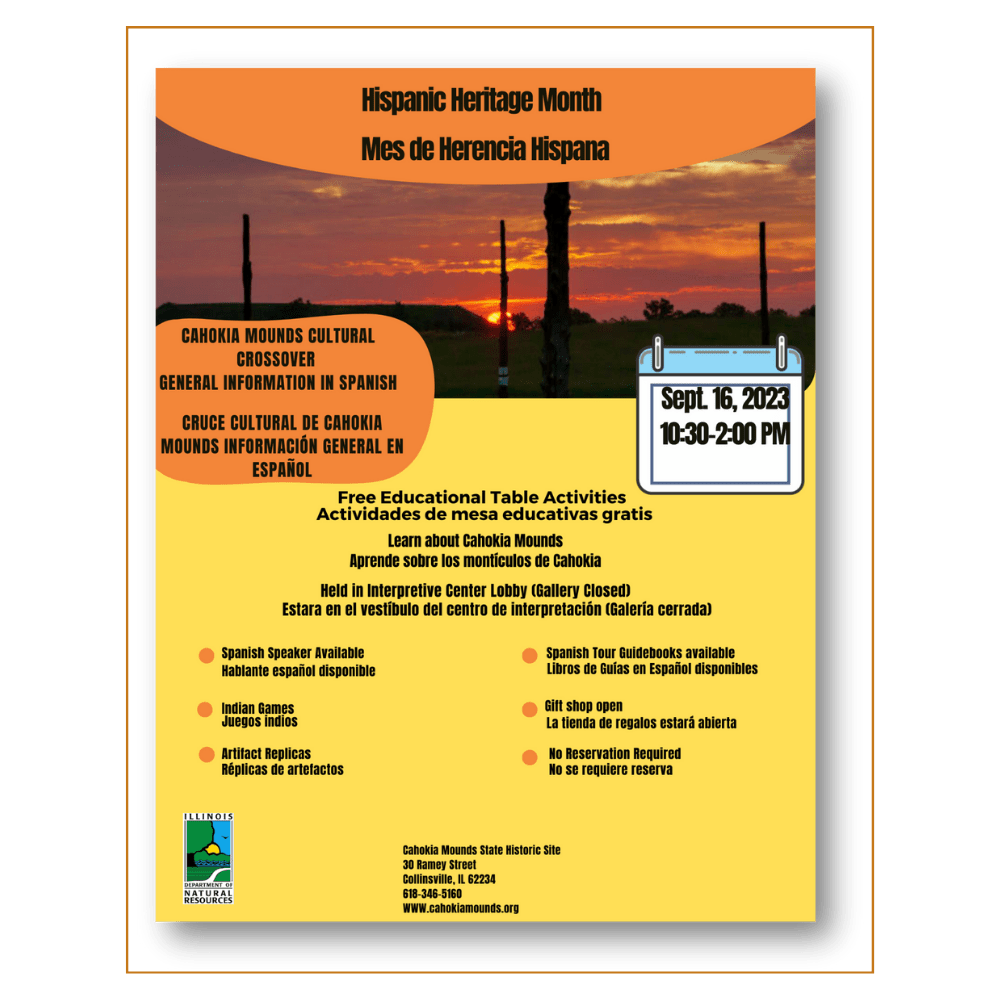
2023 Advertising Flyer for “Cahokia Mounds Cultural Crossover” event. Courtesy of Cahokia Mounds State Historic Site.
I also had the opportunity to host an open house event for Hispanic Heritage Month “Cahokia Mounds Cultural Crossover.” This event took place in the Interpretive Center’s lobby, with stations of educational activities in Spanish. The first table consisted of literature pertaining to the site in Spanish, which included the Spanish-guided tour booklet for free that is typically only available through purchase. There was another table with artifact replicas on display with Spanish labels that included tools, pottery, and animal specimens. The third table had kids’ activity sheets that were translated into Spanish with Native American games for visitors to play. I had the chance to speak to a family that said they had never been to Cahokia Mounds before but had decided to visit because they saw advertisement for this event that made them feel welcomed.
For this event and the previous Spanish-guided tours, I developed flyers for promotional purposes in both languages. I was able to distribute these flyers throughout the local community at numerous locations. These locations included public libraries, community churches, and local Mexican grocery stores. This was a great outreach effort as it allowed me to directly meet residents of State Park Place, to learn what they know about Cahokia Mounds and to offer them an opportunity to learn more about the site. I have also been able to offer presentations at some of the public schools nearby with the hopes that students may share what they learn with their parents so that they can come visit Cahokia Mounds if they have not before.
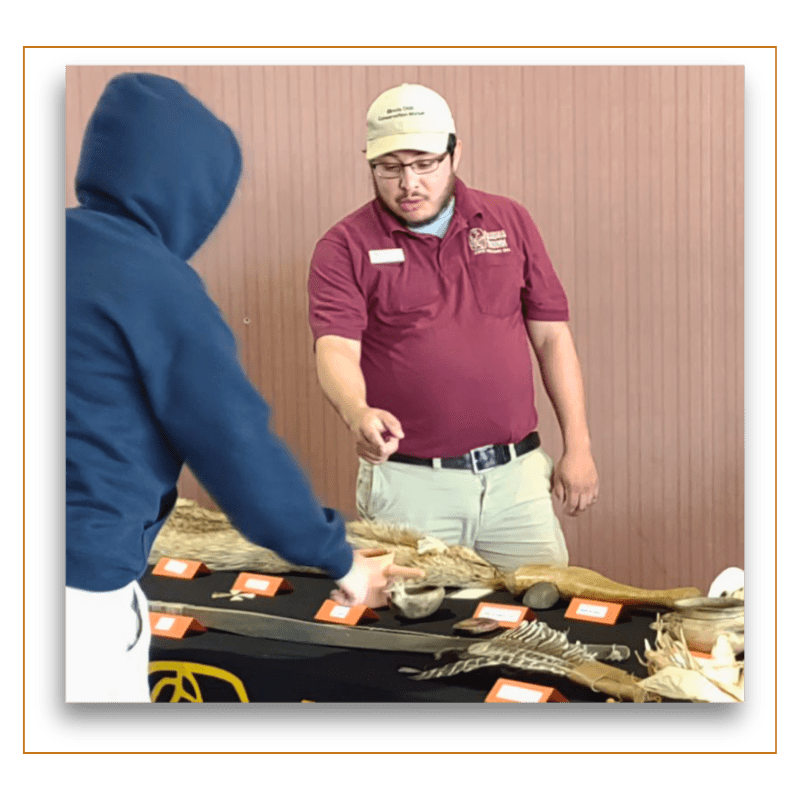
Cris Interacting with a guest during the “Cultural Crossover” event.
I am very pleased to offer these kinds of programs to the public. I believe that these introductory steps are the path to develop long lasting relationships with the immediate community in hopes of receiving support for conservation and preservation efforts. Providing interpretation in Spanish allows for the residents to learn and develop an appreciation for this cultural site and increases the likelihood that they will share what they learn with visiting family and friends. This provides the opportunity for the State Park Place community to develop a sense of pride for this cultural gem, which is the largest archeological site north of Mexico, and to foster an appreciation for cultural preservation.
Indigenous culture plays a major role in identity, especially for many Latinos as many are descendants of the Mesoamerican cultures of the past and present. Although Latinos are not descendants of the Cahokians that built the mounds, the indigenous culture is still very much relevant. Being able to make these connections can help aid the awareness and need to continue preserving these kinds of cultural sites. Support can come in various forms, from sharing and learning, to also having the opportunity to get involved and participate in preservation efforts. Representation helps narrow the gap of exclusion, and I believe that having “someone that looks like you” that is working or volunteering in an unfamiliar field can make for a more comfortable experience. I am proud to see that Cahokia Mounds has taken the steps to foster diversity and inclusivity as this is a vital component for sustainable support as we work to preserve and interpret the site.
For information about upcoming events or any other questions, please call 618-346-5160, or email museumsociety@cahokiamounds.org.

